If you want to build a powerful, consistent golf swing, lower body strength needs to be a priority in your training. A strong lower body provides the foundation for generating force, maintaining stability, and optimizing your kinematic sequence. Below are five of the best lower-body strength exercises for golfers and why they should be a staple in your weekly training.
1. Squat
The squat is a fundamental strength exercise that builds overall lower body power and stability.
-
Force Production: A strong squat improves your ability to generate ground reaction force, which directly translates to increased clubhead speed.
-
Core Engagement: Squatting under load requires strong core bracing, reinforcing the stability needed in your swing.
-
Mobility & Posture: Squats help improve hip and ankle mobility while reinforcing a strong posture—both essential for an efficient golf stance and rotation.
2. Deadlift
The deadlift is one of the best exercises for developing posterior chain strength, which plays a huge role in golf performance.
-
Hip Hinge & Explosiveness: The hip hinge pattern in the deadlift mimics the movement used in the golf swing, improving power transfer from the ground up.
-
Glute & Hamstring Strength: A strong posterior chain is key for maintaining posture and balance throughout your swing.
-
Injury Prevention: Deadlifts strengthen the lower back, reducing the risk of common golf-related injuries.
3. Hip Thrust / Kettlebell Swing
Both of these exercises target the glutes, which are often underdeveloped in golfers but are critical for power and stability.
-
Glute Strength: Strong glutes stabilize the pelvis, preventing sway and early extension in the swing.
-
Speed Development: Kettlebell swings, in particular, train explosive hip extension—key for maximizing clubhead speed.
-
Spinal Protection: Proper hip drive helps take stress off the lower back, reducing strain during rotation.
4. Single-Leg Squat Variations / Lunges
Golf is a sport that requires balance and coordination, making single-leg training a must.
-
Improves Stability: Training one leg at a time helps correct imbalances, leading to better weight transfer in your swing.
-
Strength in All Planes: Lunges and single-leg squats develop strength in multiple
-
directions, improving rotational power and control.
-
Enhanced Lower Body Control: Single-leg exercises reinforce the ability to push off the ground efficiently, helping with a more stable, powerful downswing.
5. Lateral Lunges / Cossack Squats
Since the golf swing is a rotational movement, training lateral strength and mobility is just as important as training in a straight line.
-
Better Hip Mobility: These exercises improve range of motion in the frontal plane, helping you maintain depth in your swing.
-
Stronger Weight Transfer: A powerful golf swing requires the ability to load and push off the trail leg—lateral lunges reinforce that movement.
-
Reduced Injury Risk: Strengthening lateral movement patterns helps protect the knees and hips, which take on a lot of stress during the swing.
Why These Should Be in Your Training Every Week
These exercises cover all the key movement patterns golfers need: squatting, hinging, single-leg stability, lateral strength, and explosive hip drive. By incorporating variations of these movements into your weekly training, you'll build a stronger, more resilient lower body that supports both power and longevity in your golf game.
If you're serious about improving your swing, lower body strength training isn't optional—it's essential.








